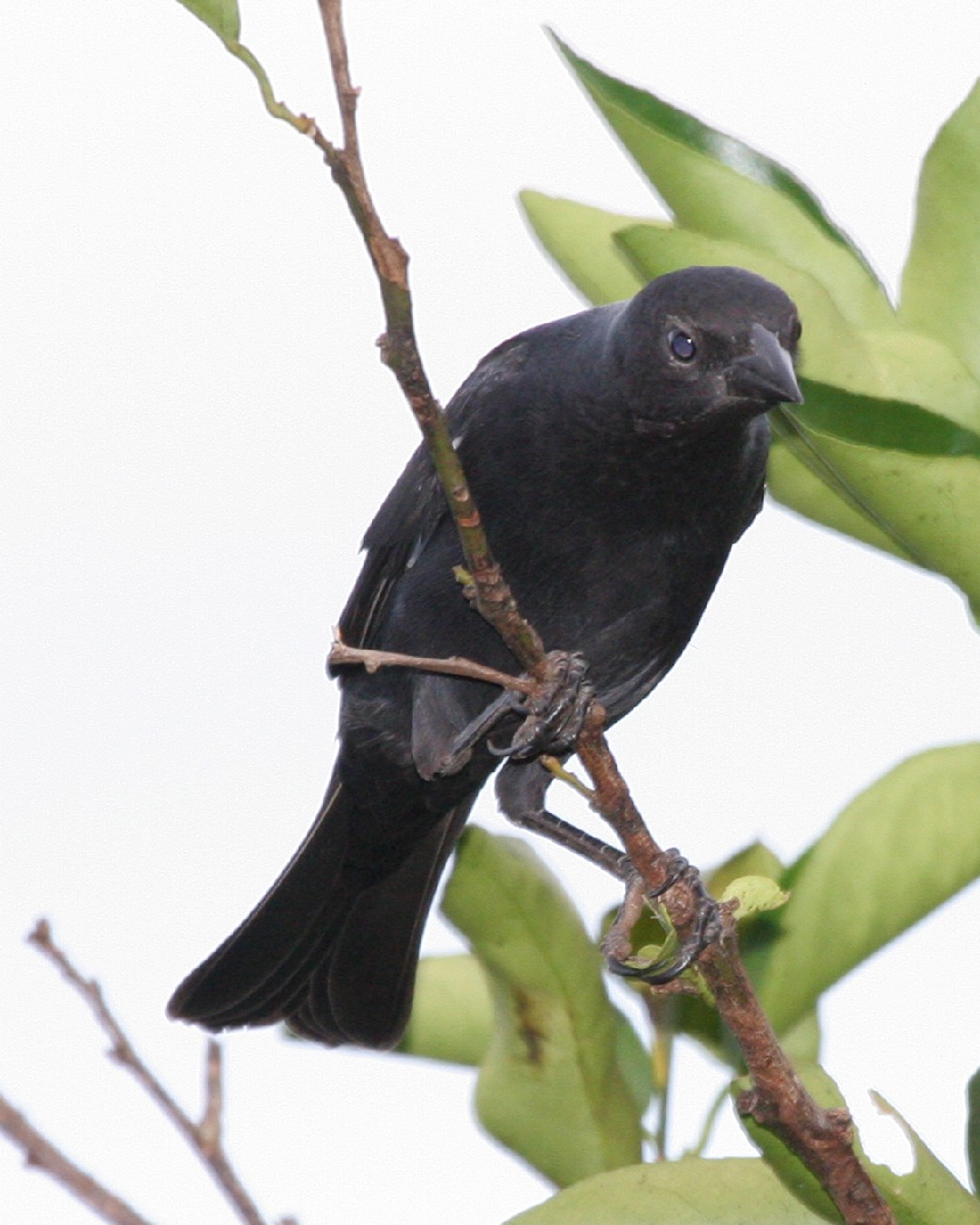Screaming Cowbird
A species of Cowbirds Scientific name : Molothrus rufoaxillaris Genus : Cowbirds
Screaming Cowbird, A species of Cowbirds
Botanical name: Molothrus rufoaxillaris
Genus: Cowbirds
Content
Description General Info
 Photo By Lip Kee Yap , used under CC-BY-SA-2.0 /Cropped and compressed from original
Photo By Lip Kee Yap , used under CC-BY-SA-2.0 /Cropped and compressed from original Description
The screaming cowbird has mildly iridescent black plumage; the lesser under-wing coverts are rufous. The female is slightly duller in colour than the male. The legs are black and the iris is reddish brown. Adult body length is 18–21 cm and mean adult weight is 58 g for males and 48 g for females. The call of the screaming cowbird was first described as "impetuous screaming notes"; however, a more useful description for field identification is noisy, explosive and piercing with rasp like calls also produced Screaming cowbirds are mostly seen in pairs or small flocks. 
Size
20 cm
Nest Placement
Tree
Habitat
Screaming Cowbird's habitat spans subtropical to temperate South American zones, encompassing cultivated pastures, grazed fields near livestock, bushy areas, and urban environments. They thrive in locales with abundant host species for nest parasitism, adapting to habitats modified by agricultural expansion and deforestation.
Dite type
Granivorous
General Info
Feeding Habits
Bird food type
Behavior
Screaming cowbirds are monogamous and form stable pairs for the duration of the breeding season. As obligate brood parasites, they do not build their own nests, and instead, parasitize the nests of other species, predominantly baywings. Most baywing nests are parasitized by the screaming cowbird with parasitism rates of 74-100% recorded. Parasitism rates of 5-20% have been recorded for the brown and yellow marsh bird and 46% for the Chopi blackbird. Screaming cowbird eggs are spotted like those of their main host, the baywing, but do vary in shape, background colour and markings. Although this may be obvious when they appear in the host nest during pre-laying, they can be difficult to detect in a nest full of eggs. Screaming cowbirds can lay 6-20 eggs in a baywing nest but usually one pair will lay only 2 eggs in the host nest. Up to 12 female screaming cowbirds can parasitize the same baywing nest. Screaming cowbird adults frequently pierce the eggs of their hosts as well as previously laid parasite eggs. One study found 22.5% of baywing eggs were punctured by the screaming cowbird. Screaming cowbirds can distinguish between their eggs and those of other species and laboratory trials have shown that screaming cowbirds will puncture shining cowbird (Molothrus bonariensis) eggs more frequently than their own. The purposes of egg puncture behavior are not clearly understood but may provide the parasite with information on the embryonic development of the host eggs and therefore whether or not to parasitize. Egg puncturing may also be practiced to reduce nestling competition and to enhance survival of parasitic offspring. Heavy predation in the form of egg punctures, which result in total nest failure and nest abandonment, may also create new opportunities for screaming cowbirds in the form of new nests to parasitize. Screaming cowbirds deceive their main host, the baywing, with superb visual chick mimicry. In fact, screaming cowbirds are the only avian brood parasite to exhibit this trait. There are slight differences in skin and bill colour of nestlings but this is only present for the first 4–5 days. They then remain almost identical in size and appearance until they become nutritionally independent. Screaming cowbird chicks also mimic the begging calls of their baywing nest mates and, in addition, beg for longer and at a higher intensity. This more intense begging does not reflect greater hunger demands; instead, reflects a hard-wired behavior to ensure adequate nourishment and survival. Although the rearing environment can influence begging call parameters, Screaming Cowbird nestlings develop the acoustic cues required for offspring recognition by the baywings independently of social experience. Due to the mimicry of nestlings and fledglings, it has been suggested that screaming cowbirds and baywings are closely related; however, molecular research has shown the species are not each other's closest relatives. 
Distribution Area
Within South America, the screaming cowbird is found in north east and central Argentina, south east Bolivia, central Brazil and throughout Paraguay and Uruguay. Its natural habitat is pastureland where it forages amongst grazing animals such as cows, hence the name "cowbird". Similar to other cowbirds, it forages predominantly on the ground, eating invertebrates that have been disturbed by grazing stock. The distribution of the screaming cowbird has increased significantly in recent decades due to habitat alteration caused by deforestation and by following its hosts into new areas. Both female and male screaming cowbirds show high fidelity in roosting locations. 
Species Status
Not globally threatened.